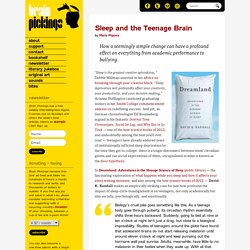

'Shrinkflation' - are companies shrinking our food items? Robots are getting more like us and famous scientists are concerned. If 1984’s cautionary tale, The Terminator, is anything to go by, humanity should be wary of any more advances in robotics or artificial intelligence.

Elon Musk recently pledged $10 million to keep artificial intelligence from running amok, and physicist Stephen Hawking told the BBC in December: “The development of full artificial intelligence could spell the end of the human race.” Musk and Hawking are backed by other scientists, professors, and security analysts who are worried about the rise of artificial intelligence that doesn’t do what humans ask. Even so, scientists continue to research more human-like robots, with more human-like intelligence and thought processes. Here are a few examples from just this month: Free-roaming robots Google-owned Boston Dynamics showed off a new version of its ATLAS robot that it’s building with DARPA. Dancing robots Tokyo University showed off something far more adorable—an army of 100 synchronized dancing robots.
Secretary robots Learning robots. Sleep and the Teenage Brain. By Maria Popova How a seemingly simple change can have a profound effect on everything from academic performance to bullying.

“Sleep is the greatest creative aphrodisiac,” Debbie Millman asserted in her advice on breaking through your creative block. “Sleep deprivation will profoundly affect your creativity, your productivity, and your decision-making,” Arianna Huffington cautioned graduating seniors in her Smith College commencement address on redefining success. The Creativity Pill - James Hamblin. Health People taking dopamine for Parkinson's disease sometimes begin to generate a lot of artwork.

New research differentiates their expressiveness from obsessive or impulsive tendencies. Please consider disabling it for our site, or supporting our work in one of these ways Subscribe Now > Neurologist Rivka Inzelberg recently noticed that her patients with Parkinson’s disease seemed to be authoring more novels than older people tend to author. Looking closer, poems and paintings also seemed to be pouring out of afflicted patients, in a relative sense—specifically those treated with a synthetic dopamine-precursor pill, levodopa (L-DOPA).
So Inzelberg, a professor at Tel Aviv University's Sackler Faculty of Medicine, asked around. Development of uncontrollable artistic urges has been documented in medical case studies. So Inzelberg’s current study tested for symptoms of impulse control disorder, as well as creativity—which it did in a variety of ways. 5 Ways Your Brain Is Messing With Your Head. We accept on a regular basis the premise that our minds are being screwed with.

Advertisers, politicians, magicians; we accept that they know the tricks to pull the wool over our eyes. But as it turns out, the ways in which your head is being truly and royally messed with the most, are coming from inside. Please be advised that your brain does not want you reading the following list, and may kill you to protect its secrets. These include... Beijing's Black Market Egg Trade Targets College Girls. Future transport: 10 inventions that will supercharge your journey. Visit to the World's Fair of 2014 Isaac Asimovin vuonna 1964 kirjoittama ennustus vuodelle 2014.
Tomorrow’s world: A guide to the next 150 years. Interactive Infographic - 13 Reasons Why Your Brain Craves Infographics. How Languages and Genes Evolve Together. As human populations disperse, the separation leads to changes both in genes and in language.

So if we look at human DNA and languages over time, we should find that they differ along similar geographic lines. It’s an intuitive theory, but difficult to prove. That is, until researchers decided to match large collections of geographic, linguistic, and genetic data on hundreds of human populations worldwide. A new study (PDF), published in Proceedings of the National Academy of Sciences, quantifies the complicated relationship between these three factors. Researchers compared the geographic presence of two things in human populations across the world: alleles (trait-defining stretches of DNA) and phonemes (the distinct units of sound that make up spoken language).
This map shows a broad picture of the geographic spread of alleles and phonemes, according to the study’s findings. Creanza et. al. Hands-on with Pepper the 'friendly robot' in Japan. Ford Model T - 100 Years Later. Lectures: Kaku. The Physics of Everything. MICHIO KAKU, Henry Semat Professor of Theoretical Physics at CUNY Lesson Overview What if we could find one single equation that explains every force in the universe? Professor Michio Kaku explores how physics could potentially shrink the science of the big bang into an equation as small as e=mc2.
Physics powers every electronic device in your living room, underwrites every technological breakthrough, and thanks to advances in string theory, could allow us to escape the heat death of the universe, explore the multiverse, and unlock the secrets of existence. Explicit cookie consent. 15 English Phrases for the Doctor’s Office.
Phrases a doctor might say: “We’ll need to run some tests.”

Tests are used to help diagnose (identify) the health problem. Some common tests are a blood test and a urine test. There are also scans such as an ultrasound (used for seeing internal organs; often used for pregnant women to see the baby) and X-rays (used for seeing the bones). Blood samples ready for testing.